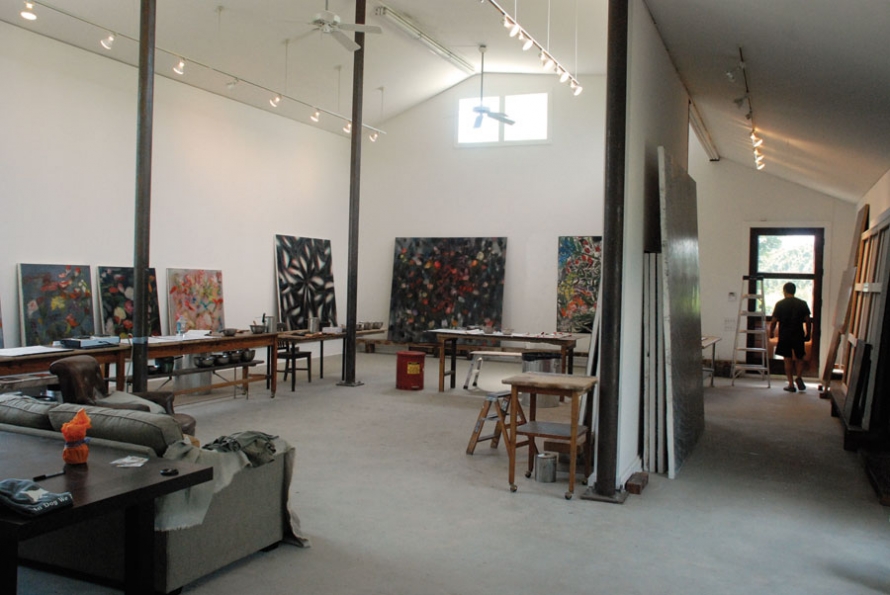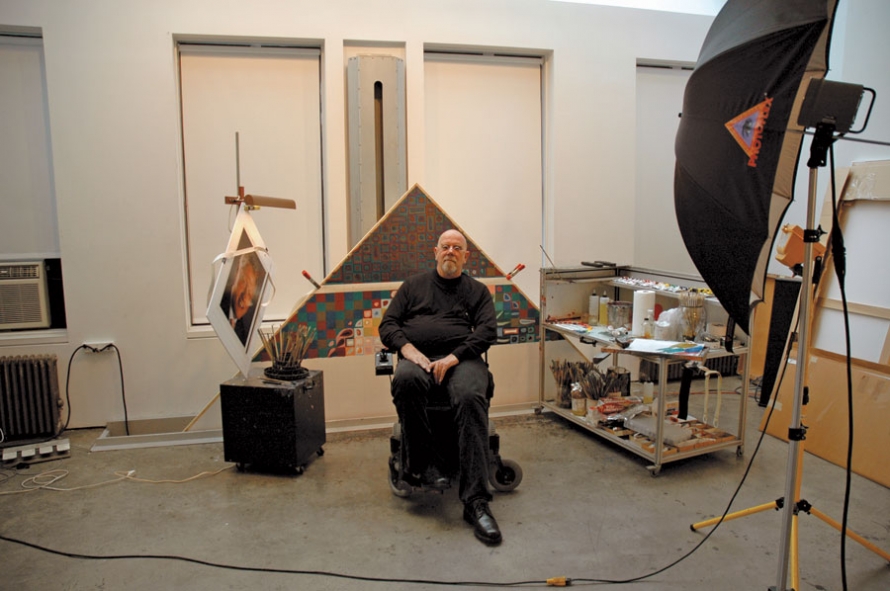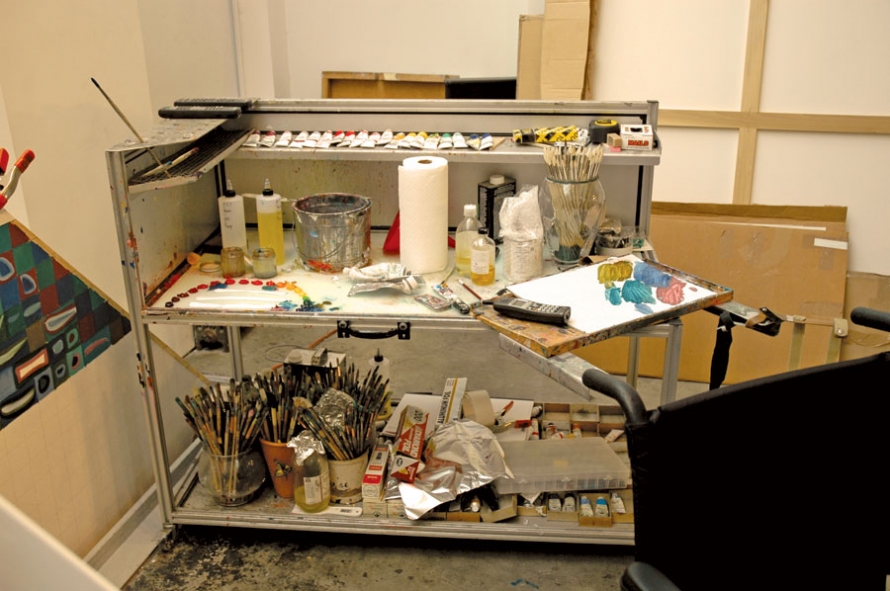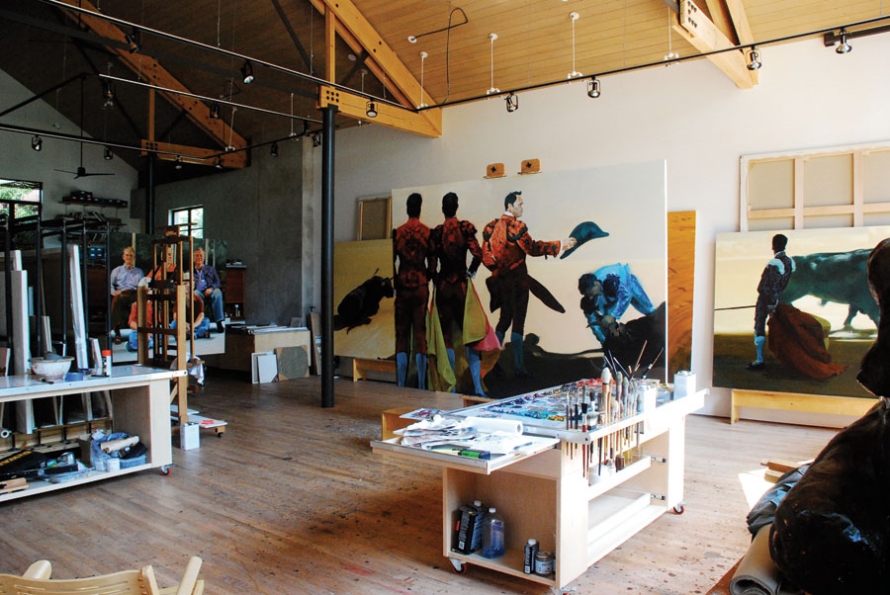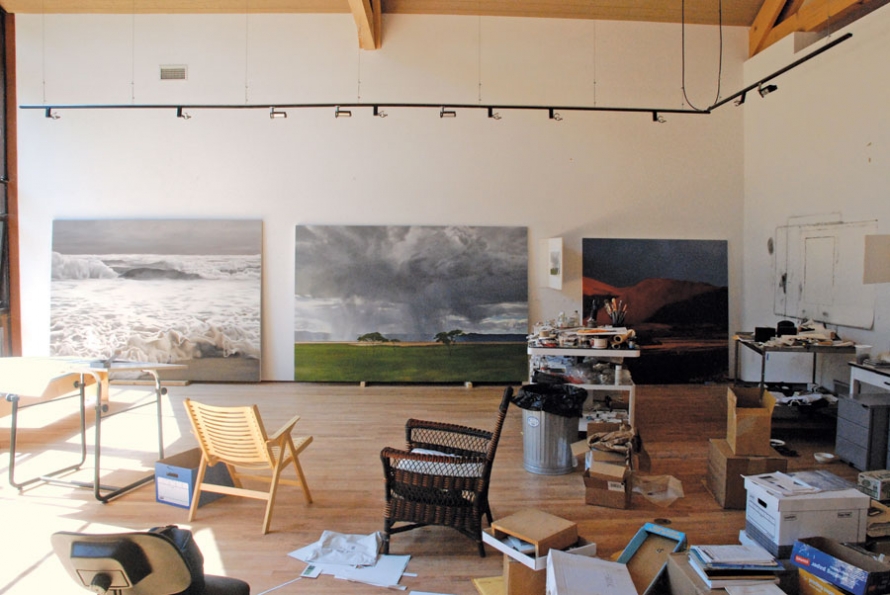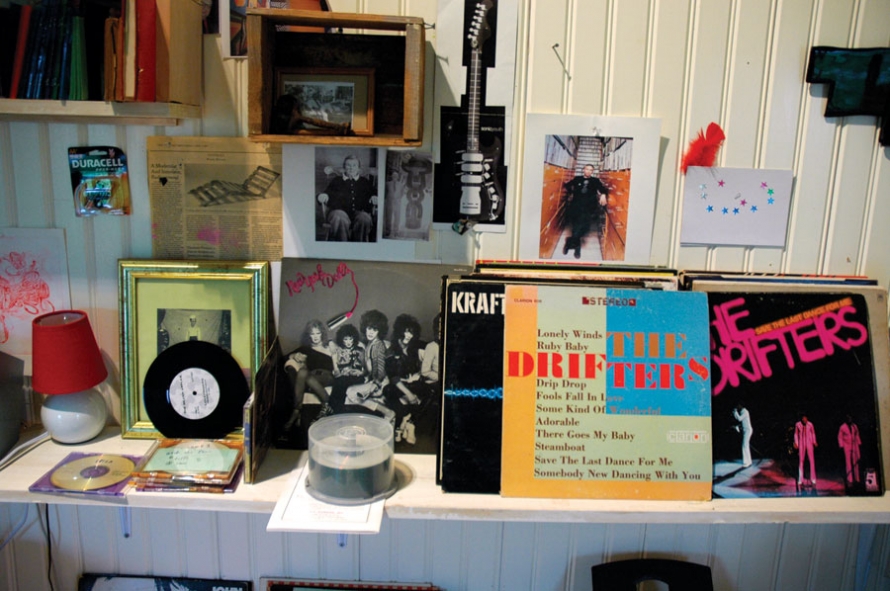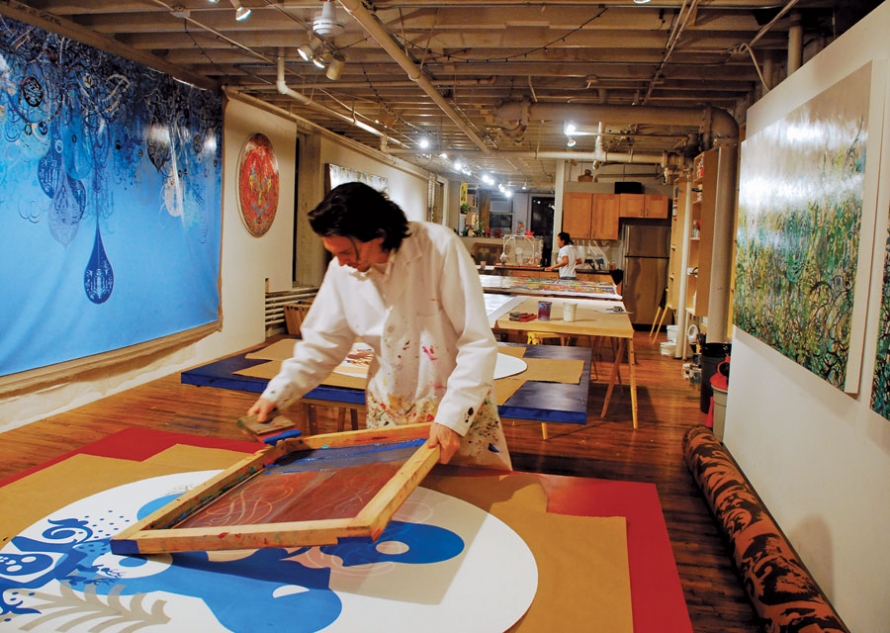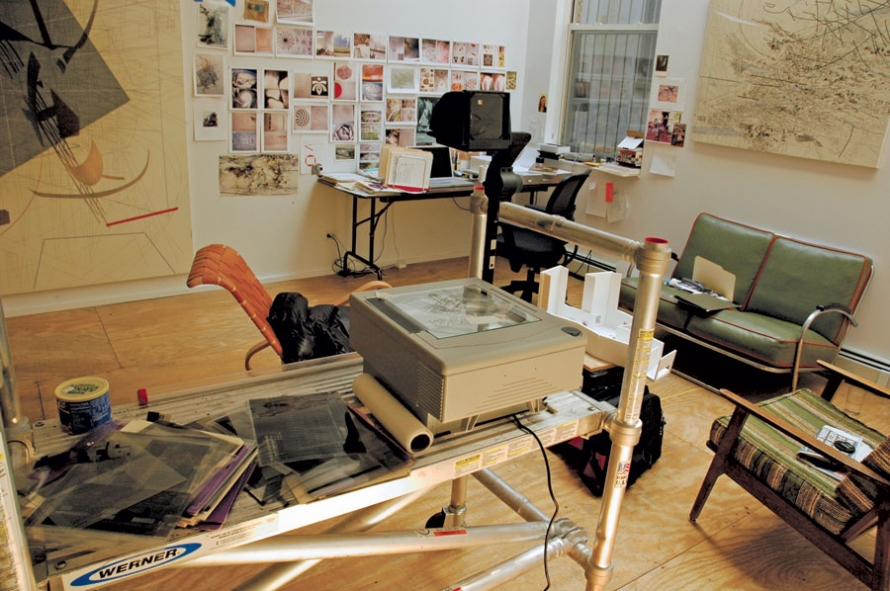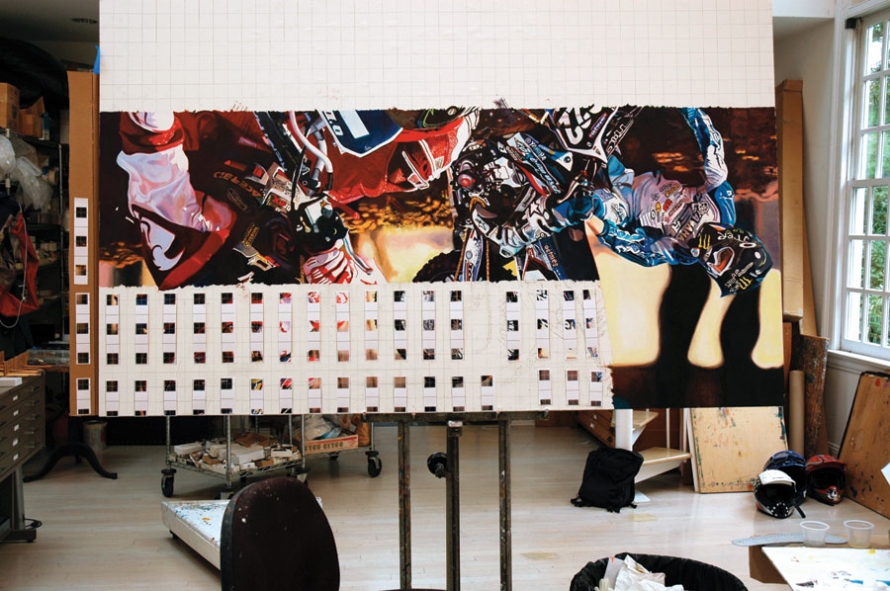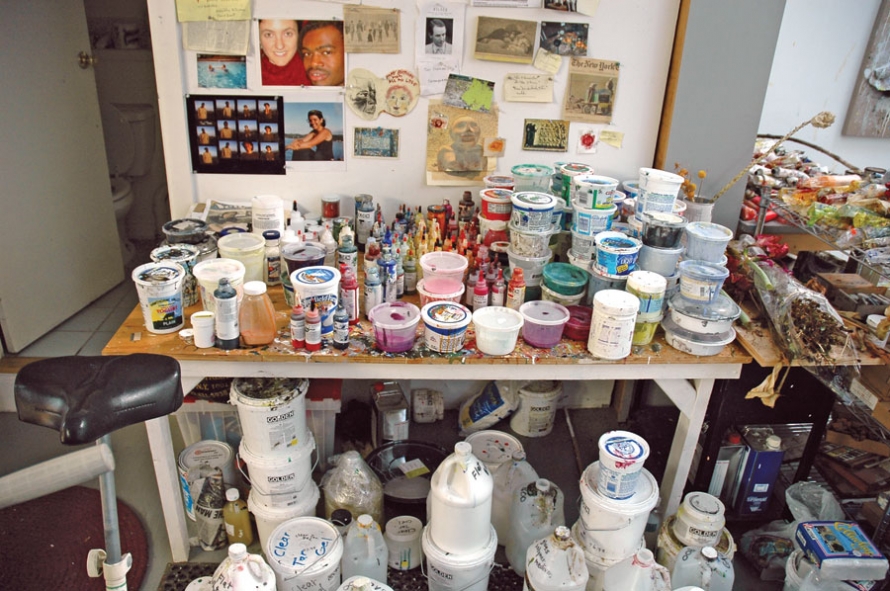In his new book, Inside the Painter’s Studio, artist Joe Fig documents the day-to-day lives of 24 contemporary artists with photos of their studios, notes on their work habits, and interviews about where and how they make art. In addition, Fig’s own sculptures are shown—miniature reproductions of the artists themselves in the process of creating, a spellbinding sort of diorama as portraiture. For any artist, historian, or art fan, there’s fascinating stuff in the minutia about gear and paint brands, and also the larger questions about what it takes to get up every morning and go paint. As Chuck Close says, “Inspiration is for amateurs, the rest of us just show up and get to work.” See below for Fig’s detailed account of how the book came to be.
Joe Fig is an artist born and raised in Long Island, New York. Fig’s work has been exhibited extensively throughout the United States. He lives in Connecticut with his wife and two children. All images courtesy and copyright the artist, all rights reserved.
What stood out as something many studios and artists had in common?
What I found to be common factors between artists are several things. I found that in at least this group of particular artists, they are successful because they work incessantly. Several work seven days a week. They all seem to have very set schedules and daily routines that they diligently keep to.
As Eric Fischl says about his daily routine, “My discipline is that I try to work on a regular basis rather than in spurts. I certainly don’t wait around for inspiration!”
And Ross Bleckner: “I am happiest and most psychologically balanced when my days follow the exact same pattern day after day after day.”
There is no idea that I have ever had that comes to me outside of the process of work. So therefore, the few months in a row I am working seven days a week—and if I am having a show or not is irrelevant—I guess the operative metaphor for me is that I am a scientist in a lab, on the verge of discovering something. Or I am just a hound dog sniffing around trying to catch the scent. But in order to do that, I need the [daily] consistency.
Having visited so many other artists’ studios, are there things you’d like to change about your own space? Did you ever get studio envy?
Oh definitely. Size would be the main thing, not so much for actual working space but more for storage. I try to keep things cleared away but especially if I have a big sculpture in here it takes up both physical and visual space. Also if I had additional space it would also be nice if I could create a “drawing” zone, a “painting” zone, a “looking at the paintings” zone, a “display” zone, a “sit on the couch and chill out and read” zone.
However, I have been surprised at how small some of the studios are, such as James Siena’s and even to a degree Chuck Close’s. About the size of his studio Chuck has said, “You know there is really no reason to have a big studio.” And, “I could paint anywhere. [In the past] I made big paintings in the tiniest bedrooms, garages, you name it. You know, once I have my back to the room, I could be anywhere. I could care less.”
As for studio envy, Eric Fischl and April Gornik have a stunning studio. Plus architecturally it is incorporated into the surrounding grounds and the main house as well. If I could trade with anyone it would be with them.
To turn one of your questionnaire questions on you, are there specific items here (in the book) that have significant meaning to you?
You know, I am grateful to have this book published. I’ve interviewed over 50 or so artists and have hundreds and hundreds of photographs and documentation. I’ve been working on this project for close to 10 years, so to actually just have the physical book in my hands is significant. I sincerely feel that I have added something to history that I have provided valuable information to fellow artists, art historians, and anyone interested in contemporary art. I tried to approach this as an unmasking of the myth of the artist and tried to get at the day-to-day reality and practicalities of what a “real” artist’s life is like.
I just received an email from a man in California who graduated from art school 20 years ago but had to deal with the responsibilities of raising a family and working. He recently has just begun to paint again and was trying to figure it all out as it had been so long. He bought my book and just wrote me, “Anyhow, as I started painting again, I found that there was a real lack of information out there about the nitty-gritty, day-to-day process of making paintings—the stuff that I was really interested in. Then I saw your book listed on your web site, and realized that you had done it: made a book about painters that I really wanted (and needed) to read. So, thank you.”
That really means a lot to me.
What are you working on now?
I have a solo show coming up October 15 at Hendershot Gallery in NYC. I also am included in a big group show entitled “Picturing the Studio” at the School of the Art Institute of Chicago, which opens December 21, 2009. I’ve also recently begun a new series of paintings based on 19th-century French painting and the creative process. I really can’t elaborate further as it is still a new group of work and I am still trying to figure out how to talk about it and what it all means.
What I’ve found interesting though is now that I am painting full-time I hear the voices of the artists I’ve interviewed (don’t worry, I’m not going crazy). And even though it’s been close to 10 years that I’ve seriously painted, I am surprised to find that I think I am a much better painter because of it.
